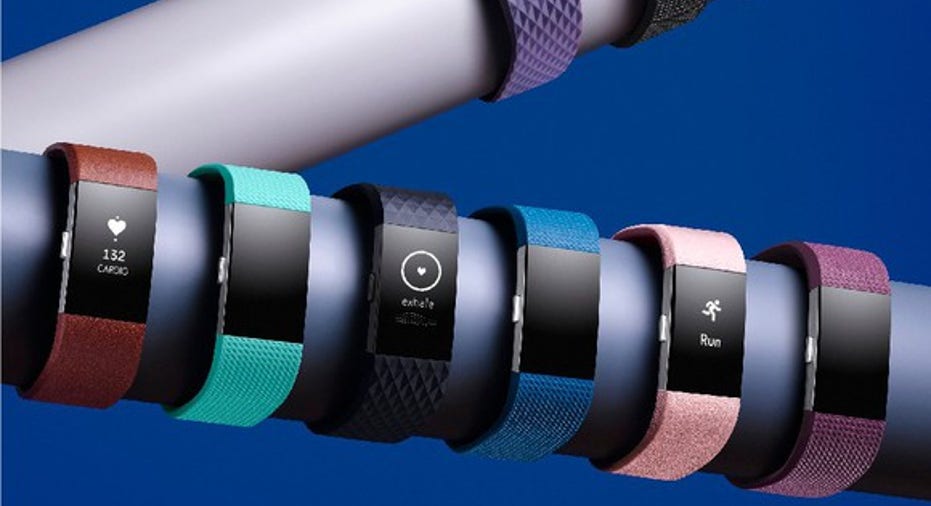4 Signs Fitbit Inc. Needs New Management

Shares of Fitbit (NYSE: FIT) plunged more than 33% on Nov. 3 after the wearables maker reported disappointing third quarter numbers. Revenue rose23% annually to $503.8 million, missing estimates by $3.1 million and representing the company's slowest growth rate since its IPO last year.
Image source: Fitbit.
Non-GAAP net income fell 23% annually to $45.7 million, or $0.19 per share, matching analyst expectations. GAAP net income, however, plunged 43% to $26.1 million. For the holiday quarter, Fitbit expects a 14%-33% decline in non-GAAP earnings on just 2%-5% revenue growth.
There's no way to sugar coat those numbers -- Fitbit's growth has hit a brick wall. Although co-founder and CEO James Park did a sound job helping Fitbit grow in the past, I think the company might need fresh blood to get its growth back on track. Let's take a look at the four key reasons Fitbit would benefit from new leadership.
1. Its scattergun strategy isn't hitting the right niches
Fitbit has tried to grow its sales by offering a wide variety of wearables for all purposes. There're the Zip and One clip-on devices, the basic Flex 2 and Alta fitness trackers, and the "smartwatch-like" Charge 2, Blaze, and Surge.
However, Fitbit hasn't expanded as deeply into certain niche markets as its rival Garmin (NASDAQ: GRMN), which sells dedicated wearables for jogging, swimming, golf, and other outdoor activities. Garmin also targets the high-end market with the Fenix Chronos, a $900 to $1,500 activity tracking watch crafted from"premium jeweler's grade materials." Fitbit doesn't offer any devices in that price range.
That's why Garmin is growing so quickly. Last quarter, itsfitness revenue rose 32% annually. Robust demand for outdoor wearable devices, including the premium Fenix devices, boosted its outdoor segment's revenue by 28%. Unless Fitbit gets more aggressive about competing with Garmin and other players in these niche categories, its business will likely continue losing steam.
Image source: Fitbit.
2. Failure to grow in Asia
To continue growing, Fitbit must aggressively expand into overseas markets. Yet it completely fumbled in the crucial APAC (Asia-Pacific) region last quarter. Revenue from the region, which accounted for 7% of its top line, plunged 45% annually due to weak marketing and localization efforts. During the conference call, Park admitted: "Our growth there is not where we had hoped."
Fitbit faces plenty of challenges across the region. Rivals like Xiaomi, which sells a Flex-like device for about $15, have lowered price expectations. Meanwhile, more affluent customers are buying showier devices like the Apple Watch. Fitbit needs a management team which can address these challenges head-on, instead of throwing money at weak marketing campaigns.
3. Undisciplined spending
Fitbit's bottom line has been under pressure for several quarters now due to its rising expenses. In the first nine months of 2016, Fitbit's sales and marketing expenses rose 71% annually to $305.1 million. R&D expenses surged 145% to $235.1 million. Both figures outpaced its revenue growth of 39% during that period.
Fitbit's investors hoped that big marketing expenses would generate higher sales. But as we saw with its dismal third quarter, those investments aren't paying off. Moreover, the manufacturing problems with the Flex 2, which will now reduce its holiday quarter revenue by about $50 million, should have been spotted earlier by its well-funded R&D teams.
4. Product recalls and accuracy issues
Under Park, Fitbit experienced several PR debacles. It recalled the Fitbit Force in 2014 after the material started causing burns and rashes. This January, it wassued by users who claimed that the Fitbit Charge HR didn't accurately track their heart rates -- a claim that Fitbit has repeatedly denied. The Charge 2, which was released in late August, didn'taccurately track distances due to software bugs. Those bugs weren't identified and patched until mid-October.
While we can chalk up some of those failures to Fitbit's "growing pains," we should also pin the blame on the company's quality control measures. Therefore, the company needs leaders who can tighten up the ship before it sinks.
But can new management save Fitbit?
With its sales slowing down, expenses rising, and its stock stuck in a nosedive, Fitbit is clearly in trouble. If Fitbit hires a new CEO, he or she must aggressively challenge Garmin in niche markets, find ways to expand internationally, and push back against cheaper rivals in Asia -- all while keeping costs under control. That's a tough task for even the most seasoned turnaround CEOs to pull off.
A secret billion-dollar stock opportunity The world's biggest tech company forgot to show you something, but a few Wall Street analysts and the Fool didn't miss a beat: There's a small company that's powering their brand-new gadgets and the coming revolution in technology. And we think its stock price has nearly unlimited room to run for early in-the-know investors! To be one of them, just click here.
Leo Sun has no position in any stocks mentioned. The Motley Fool owns shares of and recommends Apple and Fitbit. The Motley Fool has the following options: long January 2018 $90 calls on Apple and short January 2018 $95 calls on Apple. Try any of our Foolish newsletter services free for 30 days. We Fools may not all hold the same opinions, but we all believe that considering a diverse range of insights makes us better investors. The Motley Fool has a disclosure policy.



















